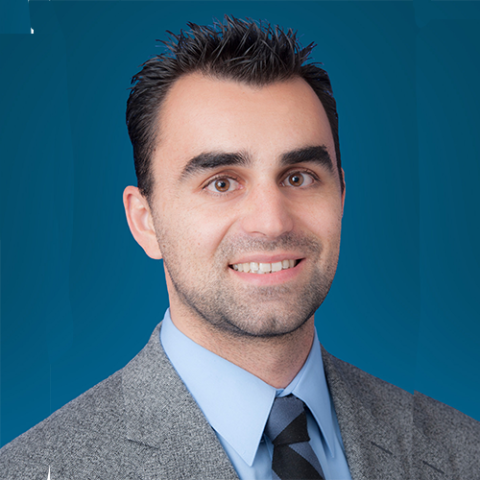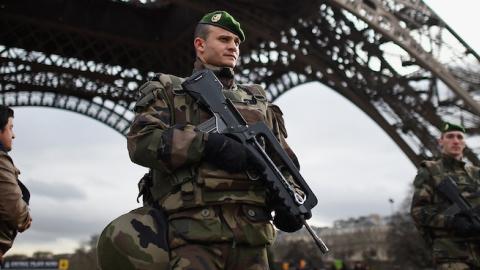In their essay titled "The French Connection", published in Foreign Affairs in the aftermath of the Brussels attacks, scholars William McCants and Christopher Meserole claim that the "best predictor of foreign fighter radicalization" is whether a country is francophone. According to their study, four out of the five countries with the highest rates of "foreign fighter radicalization" are Tunisia, Lebanon, Belgium and France.
Building on this correlation, the authors posit that these countries are influenced by a particular "French political culture", characterized first and foremost by what they term France’s "aggressive" secularism. This culture, especially when combined with other factors such as urban ghettoization and youth unemployment, they believe makes “Sunni radicalism more appealing”.
This thesis, as well as McCants and Meserole’s study (few details of which were available in their short piece), is problematic as it relies more on correlation than on any clearly demonstrated causation.
Before we turn to bigger questions, let's get to picking some nits. First of all, there is no such thing as a monolithic "French political culture" that deeply permeates countries as diverse as Belgium, Tunisia, and Lebanon. They all have large francophone populations (as do many countries in the wider Middle East and Africa) but the actual number of French speakers varies widely from country to country, ranging from 38 percent of the population in Lebanon, to 54 percent in Tunisia, and 72 percent in Belgium. Perhaps more importantly, the foreign fighters originating from these countries aren’t necessarily francophone themselves. Sweden and Denmark, for example, both have a higher number of jihadis per capita than France (although, admittedly, Belgium does lead the pack in this grim statistic).
Furthermore, a common language does not imply a common political culture: whatever influence France has had (or still has) in these countries is dwarfed by local particularities. For instance, Belgium’s federalized political system bears little to no resemblance to France’s centralized mode of governance. This is in large part a reflection of Belgium’s multicultural and multilingual reality: a society composed of three main communities—French, Flemish and German-speaking—is more sympathetic to a federalized arrangement.
McCants and Meserole go on to hypothesize that a distinctly gallic brand of secularism makes Islamic radicalization more appealing. But is this really so? It is true that secularism (laïcité) is one of the founding principles of French republicanism, but it is hardly its main component, and once again, it is not even close to being identically applied across the countries in question.
France and Belgium, for example may both have banned face-masking veils in public areas, but the Belgians are much more ambivalent than the French on the issue of the headscarf ban in public schools. In multilingual Belgium, linguistic communities are responsible for setting the rules that govern the education system, and perplexingly for those desperately seeking a French connection, the francophone community has often proven less restrictive in this regard than its Flemish counterpart.
Tunisia, for its part, had in recent decades adhered to a form of secularism that has more to do with pan-Arab nationalism—a pattern that can also be found in other non-francophone countries—than with any vestiges of France’s colonial influence. Then, during Tunisia's recent democratic transition, an Islamist party, Ennhahdha, came to power for the first time in the country’s history. And yet Tunisia remains the largest exporter of radicalized Islamist fighters in the world. With secularism sidelined, one might have expected a drop-off if one was to hew to McCants' and Meserole's thesis.
And in the case of Lebanon, most of the individuals fighting in Syria and Iraq are likely to be militiamen sent by Hizballah, an organization that has vanishingly little in common with French political culture, let alone French secularism. In fact, Lebanon itself is anything but a secular state, its institutional organization being entirely structured around the country’s religious (and ethnic) divisions.
Research conducted in France on French foreign fighters’ individual trajectories casts further doubts on McCants' and Meserole's theories. In a recent book called French Jihadists, investigative journalist David Thomson interviewed scores of foreign fighters and found a wide spectrum of motivations driving individuals towards radicalization. The most striking aspect of Thomson’s findings is the absence of any sort of unified radicalization "model". For instance, while a majority of the male foreign fighters he interviewed grew up in a working-class neighbourhood, only a minority of them actually felt disenfranchised: most were employed, and had a network of family and friends. In fact, many of the fighters Thomson and others were able to interview had little to no religious background before departing for Syria. If his sample is representative, it's hard to see how "aggressive" secularism played a key role in their individual radicalization trajectories.
The exact role played by Islam in the radicalization of French foreign fighters is itself the object of an intense debate in France. Some scholars, such as Gilles Kepel, have described a trend of "radicalization of Islamism". They argue that the growing influence of salafi preachers, when combined with their successful outreach amongst Muslim communities, has paved the way for easier recruitments by jihadist networks, even though the majority of Muslims that embrace salafism in its quietist form does not embrace violent extremism. According to Kepel and his followers, the radicalization of French Muslims is part of a broader phenomenon within Islam, a phenomenon that has been imported to France by foreign-funded radical preachers, and which has been amplified by the internet.
Others, such as Olivier Roy, put forward the opposite idea: an "Islamization of radicalism". Based on the observation that many foreign fighters neither know much about Islam, nor seriously observe it on a daily basis, he argues that most of these individuals are looking to overcome their frustration through the embrace of some—any—overarching ideology. Today it is Islamist jihadism, but in other times it might as well have been anarchism, fascism, or communism. This theory complements findings such as Thomson's cited above, or that of a recent report by the Dutch International Centre for Counter-Terrorism, which established that the share of converts in EU foreign fighters ranged from 6 percent in the case of Belgium to up to 23 percent in the case of France.
Whichever theory one subscribes to when discussing current trends of radicalization (and they aren’t necessarily mutually exclusive) the role played by "aggressive" secularism appears limited.
McCants and Meserole’s theory is far too sweeping, mistakes correlation for causation, and ultimately lacks explanatory power. But rejecting their effort does not make the problem of foreign fighters, and the severity of the attendant terrorist threat if and when they return home, any less acute for France and other European countries. And just because the aggressive secularism thesis is too reductive does not mean that there are no other possible explanations for singling out both France and Belgium as particularly vulnerable to the threat of homegrown Islamic radicalism.
One possible theory could be that the Muslim minorities living in these two countries predominantly originate from Arab countries like Morocco, Tunisia, and Algeria, making them more culturally and linguistically receptive to propaganda that feeds off the ongoing tragedy of the Syrian civil war.
It is also possible that jihadist recruiting networks, may be specifically targeting Arab Muslim minorities, as Didier Leroy, a Belgian terrorism expert, has argued. According to Leroy, Moroccan mosques in Belgium have been largely exposed to "Wahhabi proselytization" to an extent that most Turkish mosques have not. Leroy argues the difference has to do with how Turkish mosques are financed and managed, but interestingly also with the "secular heritage" of Turkey.
When it comes to France more specifically, one should not dismiss out of hand the notion that laïcité plays a role in the radicalization of some French foreign fighters, even though this role may be quite different from the one imagined by McCants and Meserole. According to Thomson, the perception of an aggressive secularism, in the form of burqa and niqab bans, for instance, is a stronger factor for those individuals who had already espoused more radical forms of Islam, such as salafism, prior to embracing violent extremism. Many outside entities seeking to shape or represent the French Muslim minority are treating laïcité as an easy target, in order to score political points: jihadist propaganda regularly claims that secularism is an expression of France’s supposed Islamophobia.
It is also worth noting that 76 percent of the French have a positive view of Muslims, the highest rate among the main European countries in 2015 (72 percent in the United Kingdom, 69 percent in Germany, 52 percent in Spain, 31 percent in Italy). Indeed, hostility towards Islam is much more pronounced in the United States. Besides, according to a Pew study, French Muslims define themselves as being French before being Muslim, and in much greater numbers than in other European countries. Islam doesn’t appear to be a political unifier of any sort. Large numbers of young French Muslims serve with pride in their nation’s armed and police forces, proudly following in the footsteps of Ahmed Merabet, the policeman who was murdered outside the offices of Charlie Hebdo.
None of this is to suggest that France in particular does not have deep problems. With 25 percent youth unemployment and tepid growth, Paris is sitting on a potential time bomb. The more opportunities and the better a future France can offer its youth the less the Republic’s values, including laïcité, can be turned against it by its adversaries.
Laïcité has long been criticized in the United States for the restrictions it is believed to put on Muslims’ religious freedom. All too often however, U.S. hostility towards the concept rests on a misunderstanding of French history and culture, and the complex legalistic intricacies of the implementation of laïcite in French society. Giving these subjects adequate treatment is beyond the scope of this essay. Our goal is only to point out the costs of hasty generalizations. It is tempting, like Isaiah Berlin’s hedgehog, to look for a silver bullet explanation when confronted with the complex realities that our societies face. But it is altogether hazardous from a methodological standpoint to reduce a society or country to a general pattern or preconception. Opponents of laïcité in the United States should avoid making it an easy scapegoat, if only for the sake of reaching a more accurate understanding of both nations’ shared challenges, among which radicalization under the form of foreign fighters has become of paramount importance.


















